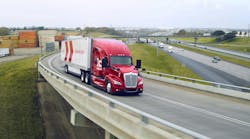There's a military adage that holds true in many human endeavors — don't fight the last war. History tell us how many times generals and admirals have been blamed for fighting the last war — using outmoded tactics and even strategies — in the early days of a new conflict without taking into account how things have changed since battle was last joined.
Consider how after the defensive, stalemated bloodbath that was World War I, mostly fought on French soil, ended, France built the Maginot Line to stop any future German attack dead in its tracks. But the French didn't foresee that the next time Germany went on the march, its blitzkrieg forces would not assault but drive around and fly over this rock-solid but hopelessly immobile defense.
Or as our own George S. Patton Jr., the World War II general who turned the German's tactics against them with a breathtaking advance across Europe, put it, “Nobody ever defended anything successfully. There is only attack and attack and attack some more.”
And so, it would seem, it goes with how fleets are combating the driver shortage.
According to results of a poll taken by Unicru (www.unicru.com), a provider of online hiring-management services, most fleets are still employing yesterday's tactics to find today's drivers.
The survey, conducted at the American Trucking Assns.' recent HR and Safety Conference, found most carriers “overwhelmingly use” the same recruiting strategies they did not just yesterday but 25 years ago!
Newspaper advertising ranked 28% and employee referrals came in at 21%, heading the list of the most commonly used recruiting methods.
“Although the labor market has changed significantly, the strategies and tactics for finding drivers have not,” says Adam Mertz, Unicru's senior manager of transportation workforce solutions. “At a time when drivers are leaving the profession for other fields, the industry needs to look to adopt new tools and techniques to retain current drivers and increase the rate at which it attracts new drivers.”
That's for sure. According to Mertz, the Internet's role in how truck drivers seek and apply for work is surely growing.
But Unicru found many trucking operations don't take advantage of this fact of modern life. In fact, its poll showed that only 9% of the responding companies cited their company web site as a “most commonly used recruiting source.”
On the other hand, Unicru says carriers that have moved recruiting online are reaping rewards. Unicru client Lexington, SC-based Southeastern Freight Lines (SEFL) aggressively promotes and accepts applications through a corporate career site and reports 75% of all its applicants now apply online.
“We no longer take paper applications or have the need for an 800-number,” says John Pryor, SEFL's vp-human resources & safety. “And we have had no complaints whatsoever. Our service center managers have been quite surprised at the volume of applications they've received and the quality that has come through the door.”
Along with setting up an online career site, other techniques Unicru says fleets should wield to help recruit drivers today include:
-
Incorporate screening and hiring process automation to improve safety performance; reduce turnover; and increase recruitment productivity.
-
Measure recruiting results — both the quantity and quality of applicants.
-
Focus on recruiting sources that are sustainable and that help build brand image.


